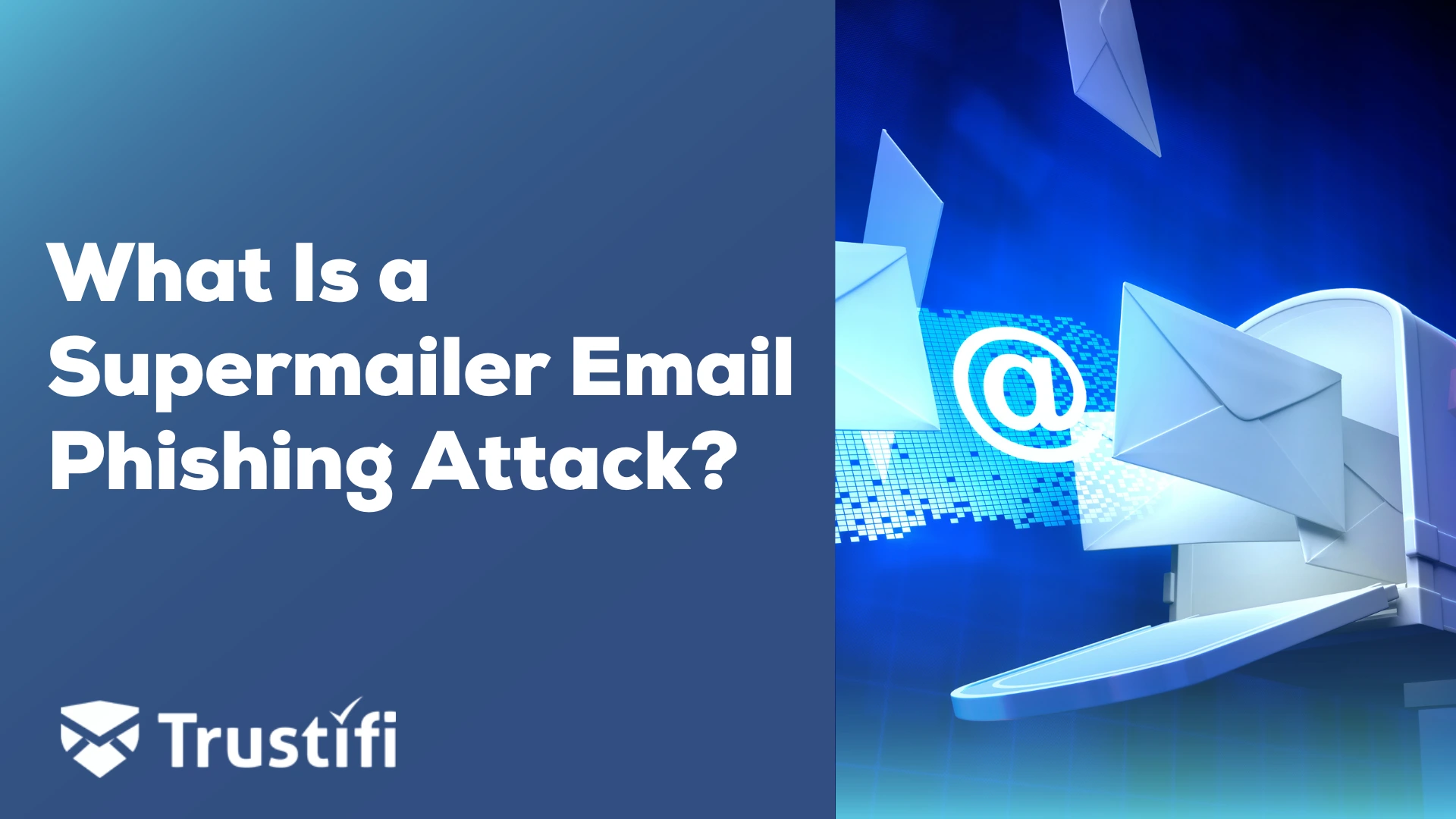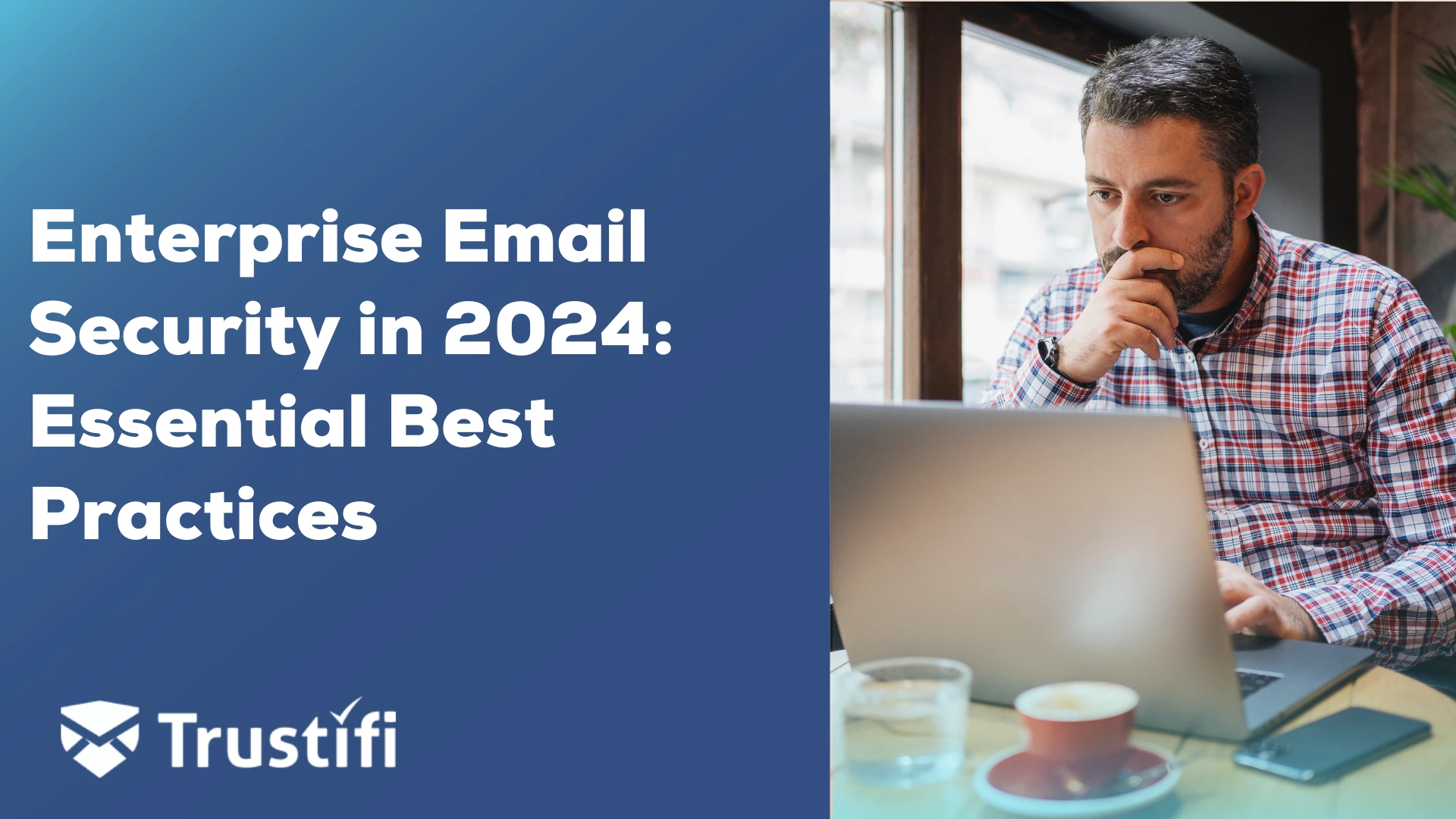SuperMailer is a software program for the desktop market that provides email templates for newsletters. Global email security platform providers like Trustifi understand attack vectors like the SuperMailer credential phishing and provide their clients the ability to scale up their email security protection with a single click.
Why are these Phishing Attacks Successful?
SuperMailer is a software program for the desktop market that provides email templates for newsletters, personal mass-mailed messages, and more. By incorporating various evasion techniques, hackers creating a SuperMailer-generated phishing email campaign continues to increase multiple levels of success.
For organizations needing to address this rapidly growing threat vector, continue to investigate the next advanced artificial intelligence (AI) email security solutions with a greater depth of security controls with full integration to help stay ahead of this threat.
Global email security platform providers like Trustifi understand emerging attack vectors like the SuperMailer credential phishing and provide their clients the ability to scale up their email security protection with a single click.
Will this new phishing email continue to become a significant problem for organizations protecting their corporate email accounts?
Phishers Exploiting Core SuperMailer Features
SuperMailer’s capabilities make it easy for users to create email HTML newsletters, help build their subscription list, and send out new correspondence to their marketplace with minimal effort. These features make this application popular with many financial, IT, insurance, healthcare, and education organizations.
Phishers and hackers exploit software packages as attack tools remain a global problem. Hackers controlling the SuperMailer program have created phishing incidents and bypassed legacy security measures. Hackers using evasive technologies, including URL randomization, have bypassed legacy email security gateway solutions. Legacy email security systems attempt URL blocking, leading to blocking legitimate emails.
Hackers know these tools can reach thousands of email users is very appealing to them. By embedding their various attack methods into the SuperMailer-generated emails, hackers can deliver everything from a credential harvesting attack, identity theft, password exploitations, and malware delivery for ransomware attacks.
Organizations also can expect noticeable increases in Business Email Compromise(BEC) attacks resulting from exploiting the SuperMailer program. Hackers impersonating ecosystem financial services accounting departments, banks, and customer accounts-payable clerks using the SuperMailer program to send fraudulent invoices, demand payment, or request a password change within the workflow optimization portal is highly probable.
Bypassing Legacy Email Security Solutions With the SuperMailer Phish
Recent SuperMailer phishing attacks have successfully bypassed legacy email security applications and devices leveraging known attack vectors, including:
-
An initial small volume of email phishing message attacks to avoid detection.
-
Messages containing legitimate Web Pages with automatic redirects.
-
Hackers embed legitimate URLs in the initial email phishing attack messaging.
-
Hackers use emails addressed with the original first name, last name, or company domain.
Many initial email address phishing attacks using an exploited SuperMailer instance have started with a meager volume of attacks. The hackers will adjust their attack tools based on the knowledge gained during the initial reconnaissance attack phase. Legacy secure email gateway(SEG) solutions will only pick up the initial first email attack if they have seen the threat vector attributes.
Once the phishers adjust their attack attributes and evasion tactics, including enabling URL randomization, they will launch the second attack on these malicious emails. The increase in the velocity of these attacks can quickly overwhelm legacy SEGs and legacy cloud email solutions. Solutions from Cisco IronPort, Mimecast, Fortinet, and Trend Micro would be susceptible to a SuperMailer Phishing Attack and, in most cases, do very little to stop the propagation.
Trustifi’s Advanced-AI Platform Scales Up The Client Email Protection
SuperMailer email phishing attacks have been successful in their large-scale phishing campaigns, high-volume credential harvesting campaigns, and other suspicious behaviors. To stop these attack methods, organizations need to enable layers of integrated security controls to help reduce phishing email attacks. Having more than one layer of protection will have little or no impact on these advanced attacks.
Trustifi’s Advanced-AI Engine Critical to Stopping SuperMailer Phish
Trustifi’s AI learned email behaviors and adjusted its various protection layers to help minimize attacks like SuperMailer email phishing, malware payload, and credential harvesting. Trustifi, a global leader in AI-powered cloud-based email security, understands the resource and budget challenges for many SMBs and mid-enterprise organizations facing SuperMailer email phishing attacks. Trustifi’s protection layers include:
-
Inbound Shield Protection with AI and ML Maturity Engines
-
Outbound Shield Protection with email encryption, data tokenization, and data loss prevention (DLP)
-
Account Compromise Detection – Stop Attacks on Email Accounts, Neutralize Compromised Accounts, and Get Reporting, Automatically
-
Managed Email Detection and Response(EMDR) Service – Access to Trustifi email security experts to assist with policy enablement and incident response.
Trustifi email security platforms use Agile and DevOps rapid deployment to add additional protection layers without affecting the everyday user experience. Through the rapid deployment of features, Trustifi responds quickly to the changing threat landscape like the SuperMailer phishing with the following integrated capabilities:
-
BEC: Trustifi protection: Trustifi’s BEC AI is trained and designed to detect text-based emails to perform employee social engineering attacks.
-
Initial Phishing Email Attacks: Trustifi’s proprietary metrics can detect and quarantine phishing attacks by unique identifiers.
-
Spear Phishing: Trustifi protection: Trustifi uses AI, feeds, and proprietary metrics to detect and quarantine malicious emails, URLs, and files that aim to steal the recipient’s data.
-
Impersonation: Trustifi’s advanced email security platform detects and tags the impersonation of the recipient’s contacts to ensure safe correspondence with a genuine connection. Also, it can identify actual emails from a brand.
-
Account compromised: Trustifi protection: Trustifi has unique metrics to detect malicious emails even though it comes from a known contact and allows listed senders. And provide account compromise detection of breached internal mailboxes.
-
Trustifi’s advanced engines also scan incoming email attachments for malicious links.
Why Trustifi?
Trustifi is a cyber security firm featuring solutions delivered on software as a service platform. Trustifi leads the market with the easiest-to-use and deploys email security products, providing both inbound and outbound email security from a single vendor.
As a global cybersecurity provider of both inbound and outbound email protection, Trustifi currently supports customers from countries including the USA, Canada, Brazil, the Dominican Republic, the UK, the Netherlands, India, the UAE, China, and Japan, Cyprus, the Philippines, and more. The company has also developed “One-Click Compliance” capabilities that cater to world security regulations, including PDPO for Hong Kong, POPI for South Africa, GDPR for Europe, and LGPD for Brazil.




Jamika
Excellent site you’ve got here.. It’s hard to find high quality writing like yours these days.
I really appreciate individuals like you! Take care!!
my webpage – malware